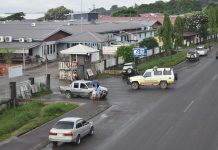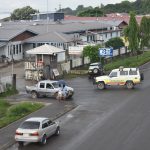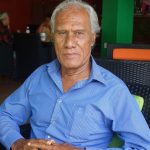Pacific countries used to struggle to collect data needed for the social protection indicator (SPI) survey that the Asian Development Bank (ADB) has been publishing since 2005.
But, David Abbott, an ADB consultant with extensive data analysis experience in the Pacific, has noticed a big increase in the last decade of Pacific countries collecting data for the SPI report.
The Social Protection Indicator (SPI) summarises the extent of social protection in Asia and the Pacific region, giving ADB and developing countries better quantitative and qualitative information on social protection programmes. The latest SPI report, tracking the progress of social protection in the Pacific was published in December last year.
“In 2005, and 2009 – the first two rounds of the Social Protection Indicators (SPI), I think there were only three or four countries from the Pacific that were engaged in those calculations. The Pacific makes up a third of all the Developing Member Countries (DMCs) of the ADB, so it’s a significant group of countries.
Abbott said in the last decade, “Since 2012, we have seen the number of countries producing the data for the SPI – increasing from eight in 2012 to 14 now, which means that all of the ADB’s Pacific Developing Member countries are now involved in the SPI. That also means that while some countries have moved forward significantly, few have yet to move very much.”
“More recently, particularly during the COVID period, we have seen the number of social protection programmes expanding in the region quite significantly. What this means is that we have seen a lot of new programmes starting, but there’s very little cohesion and integration amongst those programmes,
“And that I think is where the challenge for the Pacific lies – a lack of coordinated social protection policies. In Fiji, there are clear ideas about where social protection is going and they are more integrated. But in other Pacific countries, there is lack of cohesion and integration. And most importantly, there is lack of data, said Abbott.
Lack of data doesn’t mean that the data doesn’t exist, clarified Abbott.
“I often hear this whenever I’m talking to colleagues, development partners and so on about the Pacific. And they always say, oh, but there’s no data, we don’t know what’s going on. The fact is that there is a lot of data – there are census and survey reports in almost all the government. But that data is not being fully analysed.
“We heard this morning that there’s a lot of information there, that we’re not using, we’re wasting that data and wasting the effort.
“The challenge is, as I said right at the beginning is that we have small numbers and therefore we have to be very concerned about the confidentiality and the privacy of the data. We have to ensure that when the data is sufficiently analysed, we can use it in an aggregate form to tell the story that we that we need to tell.
“What we need to do is to improve the number and the quality of the analysis that is being done in the Pacific. We have very small social protection departments in some countries – it may only be one or two people trying to manage the programmes. And often we have programmes across many different agencies despite the fact that number of people are small. We are still having this complication of too many people, too many agencies involved in collecting and managing the social protection programmes.
Abbott is currently working on an ADB assignment in Nauru to help the Government implement its new social protection strategy.
“One of the things that they are trying to do there is to bring together all the data on beneficiaries from the half dozen or so programmes that are being run there – by the health department, by the education ministry or by the Disability department.
“Everything is being recorded somewhere in that system. But there’s no Centralised Information Centre. That is what I will be trying to do in the coming months – to establish a coordinated social protection registry.’
If we don’t have the data, then it’s very difficult to measure the impact, said Abbott.
“There is a lot of information available, as I’ve said, particularly now from census and survey reports in almost all Pacific governments. But again, we’re not using that data to the full extent that we should do.
That data can be used to inform not just social protection policies, but the much broader range of policies at the government level, said Abbott.
SOURCE: PACNEWS














